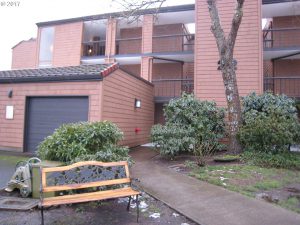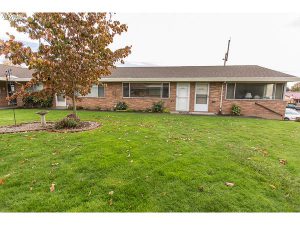
In a condo you are buying the interior walls and everything within the air space that is contained by the interior walls. The exterior walls, the space between the exterior and interior walls, and everything outside of the exterior walls is owned by the home owner’s association. This means that if you own a condo and you get a clog in your toilet, you have to pay for the repair if the clog is in the toilet itself, but as the plumbing for the toilet passes by the interior wall and leaves the condo, the plumbing belongs to the HOA and it becomes their responsibility to repair the clog.
I am making a big generalization here. Every HOA has it’s own by-laws and conditions, covenants, and restrictions, and there may be provisions in these documents that has an exception for something like a toilet clog, but in general the example holds true.
So with a condo, you rely on the home owner’s association to take care of everything outside of the living space within the condo. This includes the attic, the crawlspace below, all of the exterior paint, roof, parking lot, landscaping etc.
Most condominiums have what are called “limited common areas”. These are usually decks and small patios that are for the use of the individual unit owner, but are maintained by the HOA and for which the HOA may enter to do maintenance work.
 In a townhouse you not only own the interior space, but you also own the dirt below the home, the crawlspace, and usually the attic as well. If you have a small yard or deck, it is yours and you maintain it. The usual practice in townhouses is that the HOA owns the roof and exterior siding and they maintain those.
In a townhouse you not only own the interior space, but you also own the dirt below the home, the crawlspace, and usually the attic as well. If you have a small yard or deck, it is yours and you maintain it. The usual practice in townhouses is that the HOA owns the roof and exterior siding and they maintain those.
This may seem like splitting hairs, but it is most significant when it comes to bank financing. Banks and mortgage companies look at townhouses the same way that they look at stand alone homes. They are financed the same way and are eligible for FHA and VA financing just like regular homes that get mortgages.
Condominiums are not financed like regular homes. They are financed as condominiums with very specific guidelines and restrictions. If a property is a condominium it must be in an approved complex to qualify for either FHA or VA financing. For conventional financing there are also restrictions, although not quite as stringent.
 The word townhouse by practice has come to reference more of an architectural style. The public tends to think that a townhouse is attached to its neighbors only on the sides and that it does not have an attached neighbor either above or below. This is a fallacy. Just because it has a style known as a “townhouse” does not mean that it is not, in fact, a condo. So how do you know if a property is a townhouse or a condo? It’s in the legal description of the property. If it’s a condo, it will have a legal description that includes the word “condominium”.
The word townhouse by practice has come to reference more of an architectural style. The public tends to think that a townhouse is attached to its neighbors only on the sides and that it does not have an attached neighbor either above or below. This is a fallacy. Just because it has a style known as a “townhouse” does not mean that it is not, in fact, a condo. So how do you know if a property is a townhouse or a condo? It’s in the legal description of the property. If it’s a condo, it will have a legal description that includes the word “condominium”.
It can all be a bit confusing. Further mixing folks up is the word “attached”. This word has been used in the RMLS data base for decades. It needs to fall out of use! It may mean that the property is attached to another property, but it does not tell you if it’s a townhouse or a condo. In time, I do think it will fall out of use, but in the mean time I hope this little explanation has helped you to understand what is a condo and what is a townhouse.
Dianne
